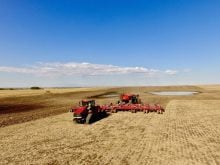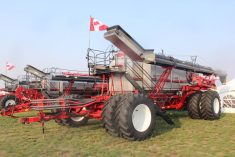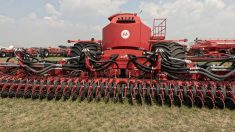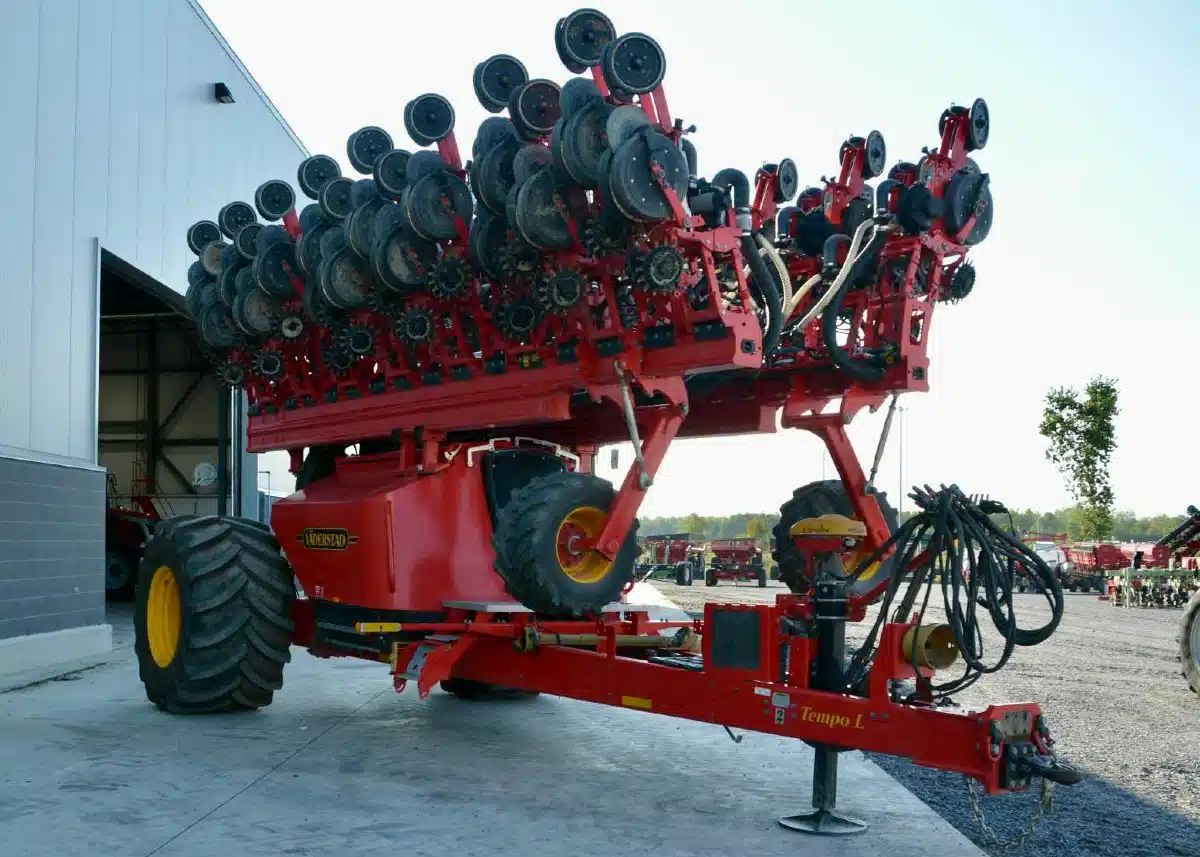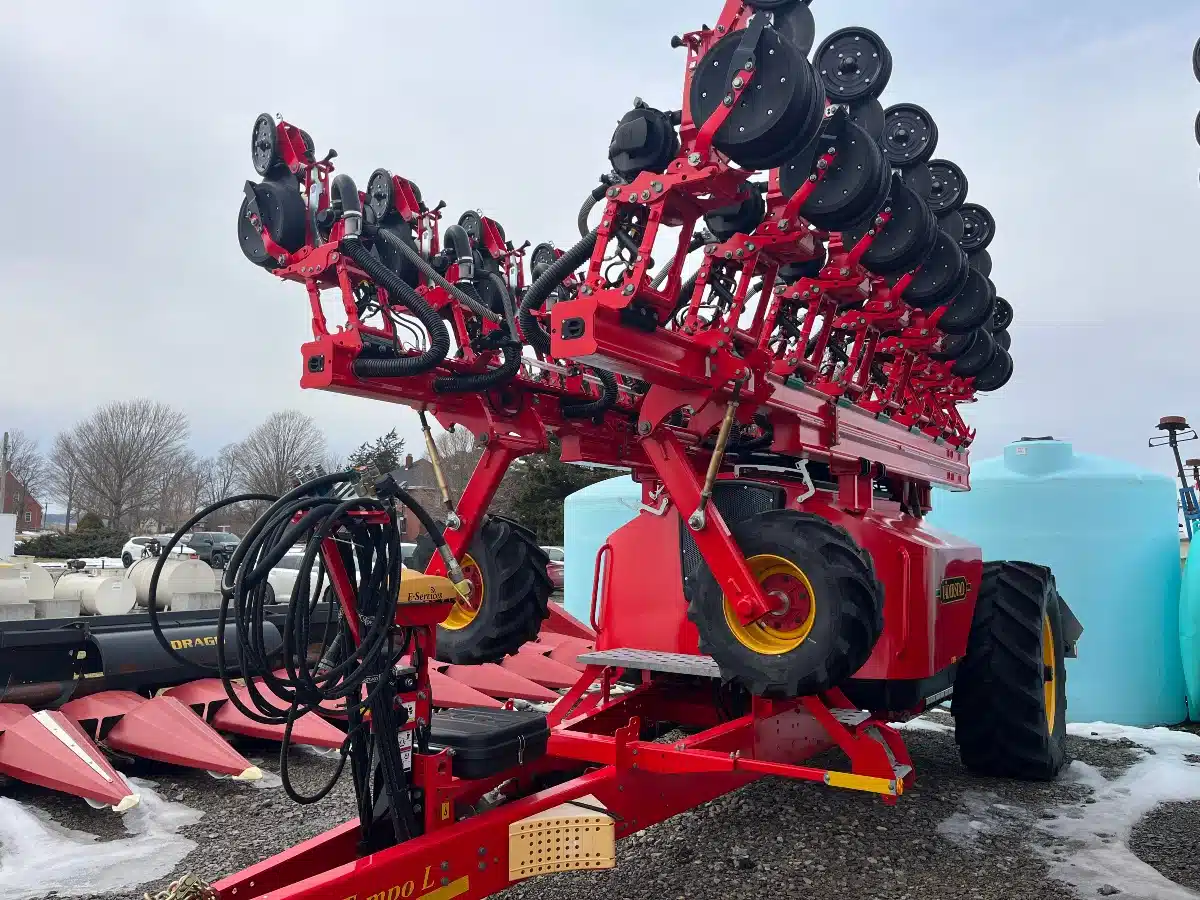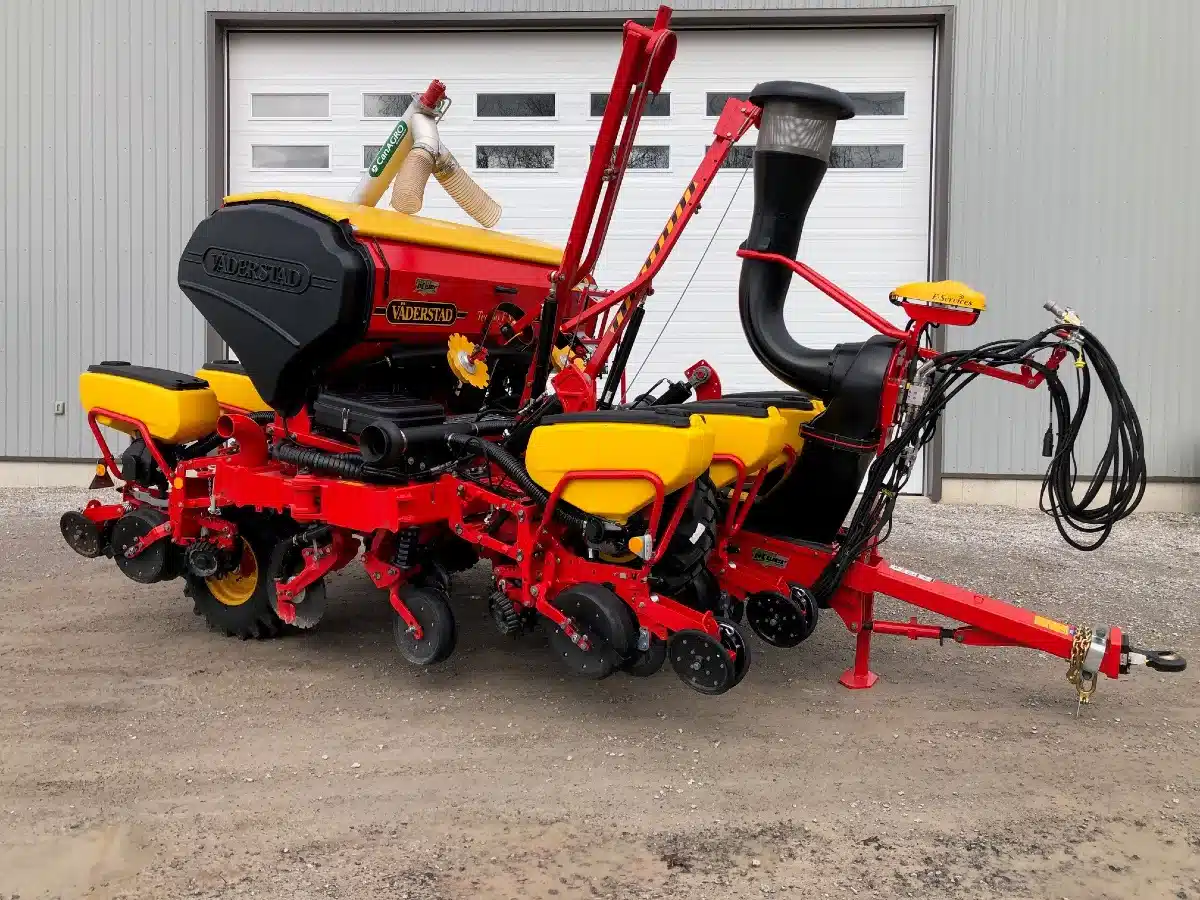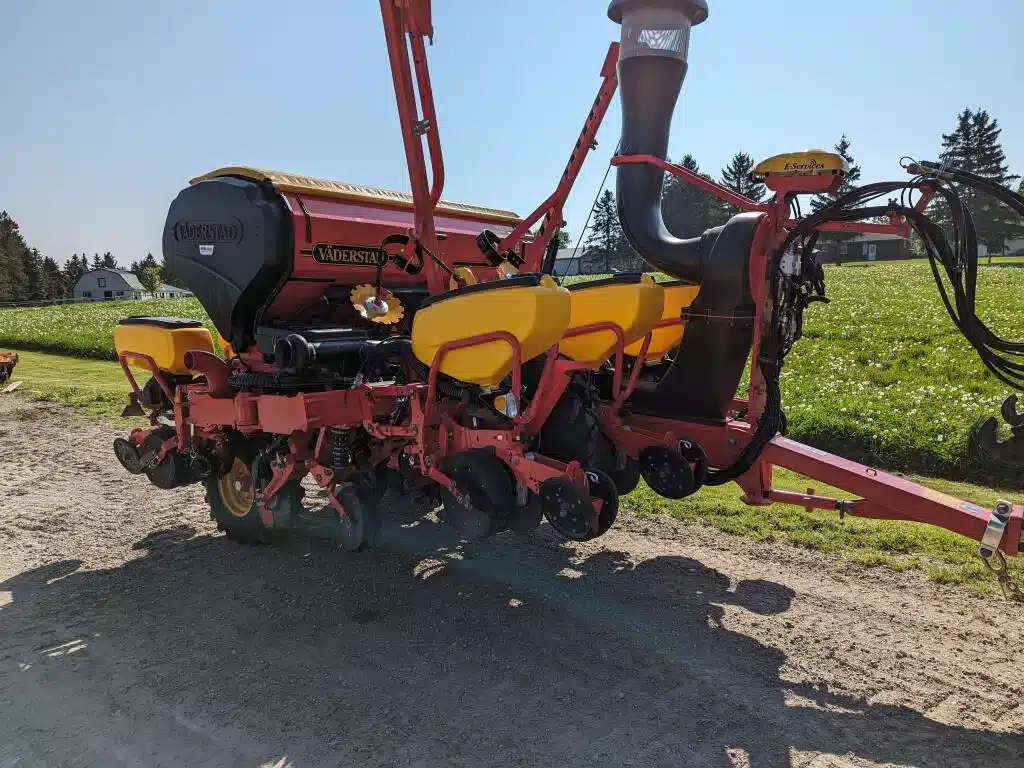Last September, Vaderstad unveiled a pre-production example of its new high-speed Tempo K planter at the Big Iron farm show at Fargo, N.D. At that time the company expected to begin accepting orders in the spring of this year.
Right on schedule, the Tempo K now officially hits the market in North America.
“For the first official launch we are keeping it at 24-row, 30-inch spacing, with the plan in the future to release a 20- and/or a 22-inch version,” says Vaderstad’s director of sales for Western Canada, Phillip Korczak. “But for now the 30-inch is all that’s available for the spring of 2025.”
Read Also
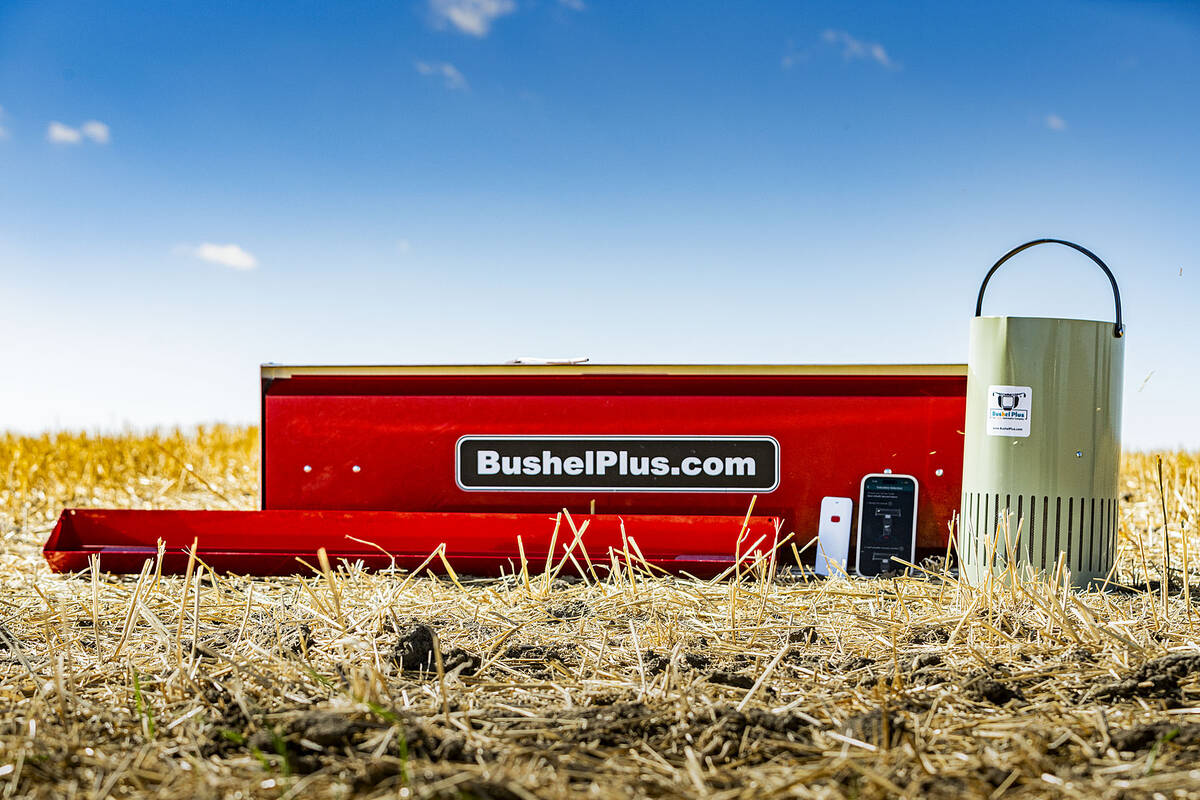
Bushel Plus SmartPan system now available from John Deere dealers
Grain growers interested in the Bushel Plus SmartPan system to verify combine grain loss can now check it out at participating John Deere dealers.
That 30-inch row spacing is the most common planter configuration in North America, but most of the demand for that comes from the midwestern U.S. Although its 30-inch configuration may not suit most western Canadian growers’ demands, many of the new features incorporated on the Tempo K will be available on Vaderstad’s other planter models that do.
For 20-, 22- and 15-inch spacings, Vaderstad Sweden does offer other Tempo product lines that can fill that gap, Korczak says.
“On the Tempo line in general, not just on the Tempo K, they have a new processing computer onboard that has more capabilities, more processing power, et cetera.”
If you get the new version of the processing software, he adds, you get the new features available with it.
First among those new features is curve compensation, which will adjust the seeding rate across the toolbar to ensure proper seed spacing is maintained in a turn, despite the difference in speed between its two ends.
“If you’re putting seeds in the same spacing, the inside of the turn should have less seed than the outside, because the outside wing will be swinging faster,” he adds. “We want to make sure your population is still the same from the inside of the turn to the outside.

“The other big news out in the Tempo line with this new processing computer is automatic singulation. We’ve always had singulation in the seed meter, but it’s been mechanically controlled. This replaces the mechanical aspect of the singulation with an electric motor.
“Through the seed sensor, it’s able to determine if you have skips or doubles. Based on the sensor’s feedback, it will automatically adjust the singulation of each individual row separately from the other.”
To ensure seeds are consistently placed at the right depth, active down pressure adjustment is also now available across the Tempo planter line. Buyers can choose how much control they have over it with three different options.
READ MORE: Vaderstad makes canola seed singulation possible
“You can have one downforce sensor,” Korczak says. “So basically one row unit is measuring the downforce but you’re adjusting across the width of the toolbar based on what that one row unit is seeing. Or you can have it on every single row. Then every row unit is being adjusted independently based on soil conditions. So you’re not overpacking or underpacking anywhere across the width of the unit.
“That’s a big feature customers have been asking for. Competitors out there have it.”
The North American version of the Tempo K will have a central seed tank rather than a small one on each row unit.
“The Tempo K comes with 150-bushel central-fill onboard capacity for seed,” says Korczak. “It also has the ability for two 750-gallon liquid tanks to be able to put liquid fertilizer down with the crop as well.
“What most of the North American market wants is central-fill seed up on the whole unit and the ability to put a liquid starter fertilizer usually in-row at the same time.”





